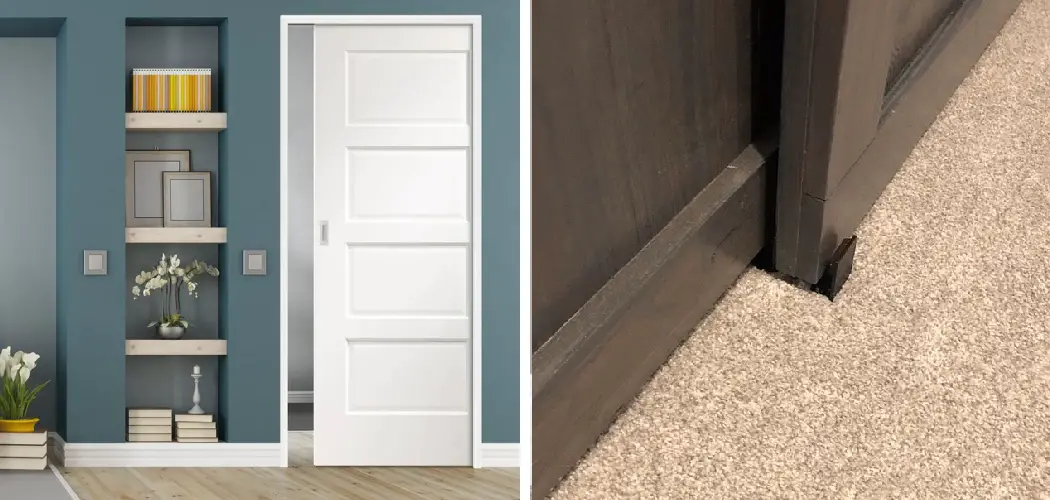Have you ever opened a pocket door and felt it rub against the frame as you slide it open? This kind of sticking, binding, or rubbing can cause a lot of inconveniences, especially if your pocket door opens into an area that is frequently used. It will cause a lot of wear and tear on the door itself, and it can be quite annoying to open.
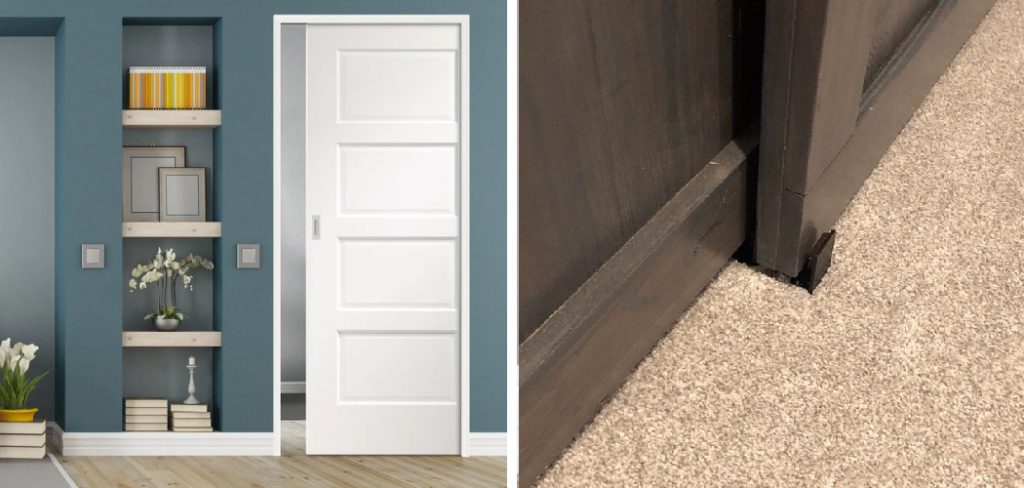
Fortunately, there are some simple steps on how to fix a pocket door that rubs, and you can take to repair your pocket door and ensure smoother operation. In this post, we’ll explore how to identify the problem with your pocket door so that it functions appropriately, allowing effortless opening and closing.
Can You Do It Yourself?
The first question you need to ask yourself is whether you want to attempt this repair on your own or if it’s better to contact a professional. This depends largely on the complexity of the problem and your skill level as a do-it-yourselfer.
If the issue is relatively minor, such as an issue with the door’s alignment, then you may be able to perform the necessary repairs yourself. However, if it seems like a more complex problem, such as a stuck roller or a broken track, then it’s probably better for you to call a professional who can quickly diagnose and repair the problem.
Identifying What Is Causing The Problem
When trying to diagnose the cause of a rubbing pocket door, there are several things you should pay attention to. First, check if the door is binding or sticking in any areas of its track. If so, then you may need to adjust the hinges or rollers on the inside of the frame to ensure that it slides freely along its track.
It may also be necessary to lubricate the track with a silicone spray.
Check if the door is not level or evenly spaced along its frame, as this can cause rubbing when opening and closing. If the door isn’t properly aligned, then you will need to adjust the screws on either end of the pocket door’s track to even out the spacing.
Finally, check if there is any damage or wear and tear on the door itself. If so, then you may need to replace the damaged parts of the door in order to restore it to a fully functional state. After identifying the problem, you will be able to fix it easily.

10 Steps on How to Fix a Pocket Door That Rubs
Step 1: Remove the Pocket Door
Remove the pocket door from its frame. Do this by pulling out the two small screws at the top and bottom, then gently lift the door away. Removing the door will provide better access to make the necessary adjustments.
Step 2: Adjust the Rollers
Adjust the rollers if they are misaligned or causing resistance against the frame. This can often be done by hand but might require some basic tools depending on how tight they are. Loosen any screws that may be holding them in place and adjust them until they are level in relation to each other.
Step 3: Check the Door Track
If the rollers have been adjusted and the door is still rubbing, you may need to check for dirt or other debris blocking the track. Use a vacuum to clean out any dust or dirt that could be causing an obstruction. If there are any gaps in the track, you can fill them with a little lubricant to help make sure it fits correctly.
Step 4: Check the Door Slides
If there is still rubbing or resistance, check the door slides for any wear and tear. If they are damaged or worn out, they need to be replaced. This may require a bit of work, but it should be relatively easy to do.
Step 5: Lubricate the Track
If all else fails, try lubricating the track with light oil. This will help make sure that the door slides easily in and out of its frame without any rubbing or resistance. Be sure to check the track for any build-up of dirt and dust, which could be causing the rubbing. Cleaning the dust off and lubricating the track should help resolve any issues.
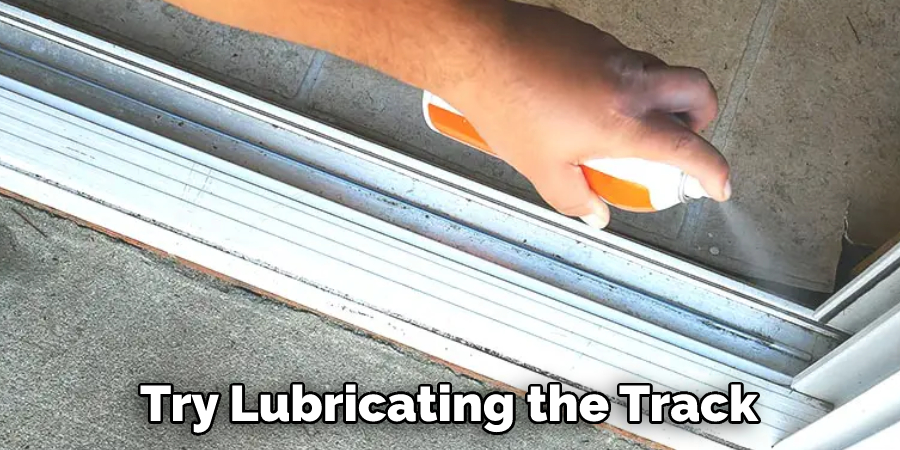
Step 6: Adjust the Door Frame
If there is still rubbing or resistance, it may be due to a misaligned door frame. To adjust this, use a level to make sure everything is even on all sides. If necessary, use shims to even out the door frame and make sure it fits correctly.
Step 7: Check the Wall
Check to make sure that the wall around the pocket door is not causing any rubbing or resistance. Make sure that there are no obstructions such as nails, screws, or other items sticking out of the walls which could be preventing the pocket door from moving freely.
Step 8: Balance the Door
If the pocket door still rubs, try balancing it by adjusting the screws located on both sides of the frame. This will help make sure that the door slides evenly and without any resistance or rubbing. Balancing is important as it helps prevent wear and tear on the door.
Step 9: Check the Door Bottom
If after all these steps have been done, there is still rubbing or resistance, check the bottom of the pocket door for any obstructions. Make sure that nothing is stuck to the underside of the door, which could be causing a problem. This is especially important if the pocket door is sliding open or closed on its own.
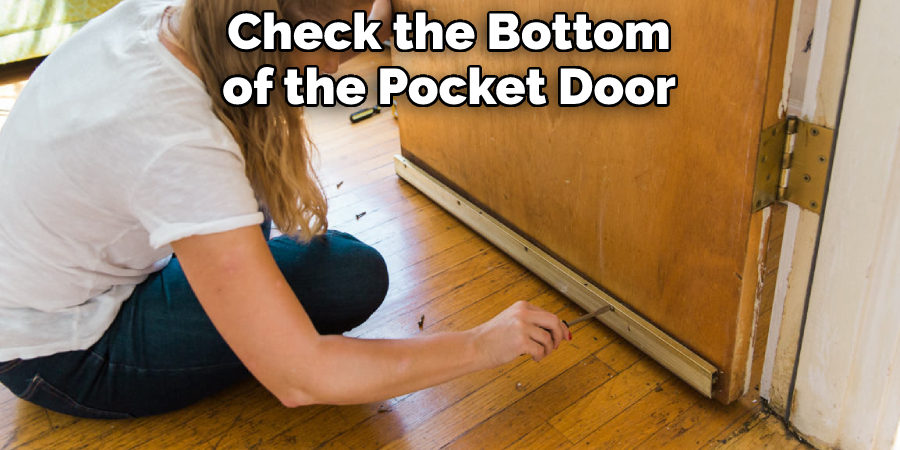
Step 10: Contact a Professional
If, after all these steps have been taken and you are still struggling to fix the rubbing pocket door, it might be best to contact a professional for help. A handyman can provide experienced repair services and make sure your pocket door operates smoothly.
10 Safety Measures to Follow
- Make sure to wear safety goggles when working with power tools. The goggles protect your eyes from debris or sawdust that may be kicked up during the process.
- When working with tools, always wear protective gloves to avoid accidental cuts and scrapes. Be careful not to thrust your hand into the pocket door frame.
- Wear a dust mask whenever sanding, planing or sawing the door and its components. This prevents you from inhaling any hazardous materials. A dusk mask also helps to avoid irritation of the eyes and nose caused by the fine particles of dust.
- Unplug all power tools before making adjustments to the pocket door. This ensures that no electrical shock can occur while working on the door. It is an important safety measure that should not be overlooked.
- Secure the pocket door in place while making adjustments to prevent it from slipping out of alignment. Securing the door also prevents injury from occurring.
- Always use the proper tools and accessories while working on the pocket door. Using the wrong tool can cause damage or further complicate the repair process.
- Inspect the pocket door for any exposed nails, screws, or fasteners prior to making adjustments. If any are found, safely remove them before beginning the repair process.
- Make sure to secure any loose components with additional screws or nails before starting work on the pocket door. This helps prevent further damage from occurring in the process.
- Take all necessary precautions when working around electricity and wiring associated with the pocket door installation. Electrical shock can be fatal if proper care is not taken.
- If the pocket door is making a noise or sticking, use proper lubricants to reduce friction and make adjustments to the track or frame before attempting drastic repairs. This can help you avoid costly mistakes while resolving the issue.
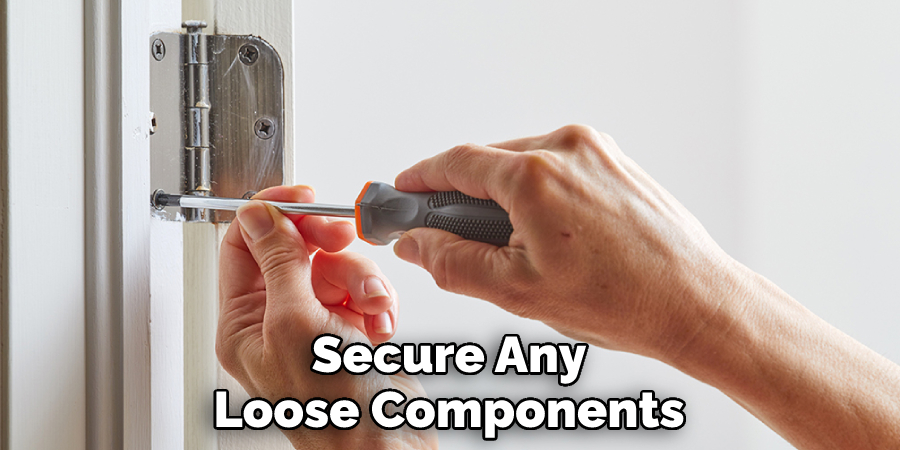
By following these safety measures, you can ensure that your repair process is both safe and successful!
Conclusion
Working on a pocket door can be quite frustrating, particularly if the door rubs against the frame. Luckily, there are some straightforward ways to fix this problem, such as using shims or making sure the components of the jamb and the track are level and aligned.
Additionally, it is important to lubricate all of the moving pieces, like the hinge cups and rollers, for a smooth operation. Furthermore, make sure that you inspect your material beforehand to ensure that everything will fit together correctly. Taking these steps on how to fix a pocket door that rubs, and allowing yourself ample time to complete each task will have your pocket door working as intended in no time. When dealing with a complicated project like this one, being organized is key!
By following these simple tips, you’ll soon find yourself enjoying a freshly updated pocket door with minimal stress and effort!
You Can Check It Out to Make a Paneled Door

